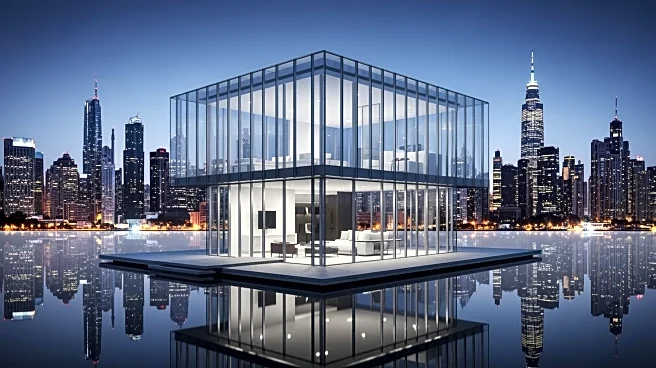What's Happening?
Realtor.com's September Luxury Housing Report reveals significant disparities in what a million-dollar budget can buy across different U.S. cities. In Atlanta, Denver, and Dallas, homes priced between
$1 to $2 million average over 4,000 square feet, offering buyers substantial space. Conversely, in Honolulu and San Jose, similar budgets yield much smaller properties, averaging around 1,650 to 1,700 square feet. The report indicates a slight decrease in the national luxury market entry point to $1.24 million, reflecting a modest market rebalancing. Santa Barbara, California, tops the list of the most expensive luxury markets, with the top 10% of homes starting at $8.95 million.
Why It's Important?
The report underscores the significant impact of geographic location on real estate value, highlighting how market conditions and local demand influence property sizes and prices. This information is crucial for potential buyers and investors, as it provides insight into where their money can stretch further. The findings also suggest a stabilization in the luxury housing market, with prices softening slightly, which could indicate a more balanced market environment. This trend may benefit buyers looking for negotiation opportunities, particularly in cities like Atlanta and Denver, where larger properties are available for the same budget.
What's Next?
As the luxury housing market continues to stabilize, potential buyers may find more opportunities to negotiate prices, especially in markets where larger homes are available. Real estate agents and investors will likely monitor these trends closely to adjust their strategies accordingly. Additionally, cities with high demand and limited inventory, such as Santa Barbara and Heber, Utah, may continue to see strong interest from buyers seeking exclusive properties, potentially driving further price increases in these areas.
Beyond the Headlines
The report's findings may influence broader economic and social trends, such as migration patterns, as individuals and families seek more affordable housing options in cities offering larger properties for the same price. This could lead to shifts in local economies and demographics, impacting everything from school enrollments to local business growth. Additionally, the data may prompt discussions about housing affordability and the need for more equitable housing policies across different regions.











